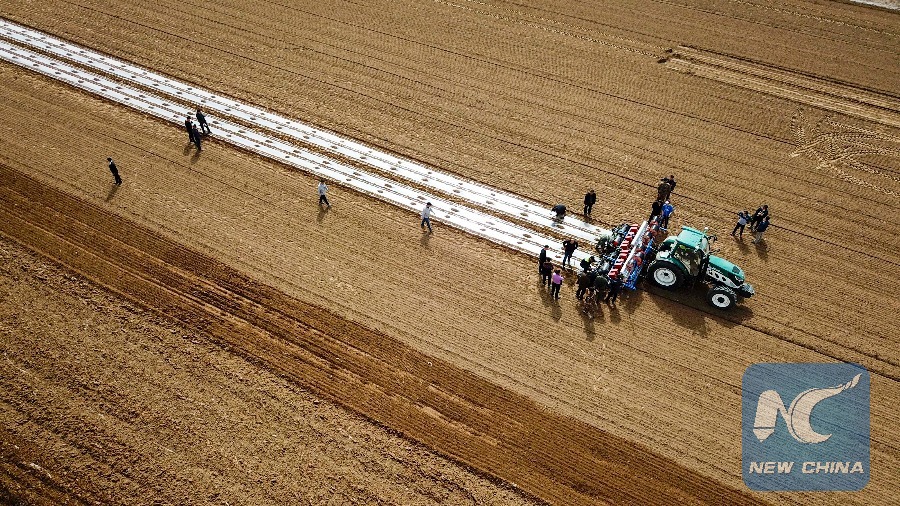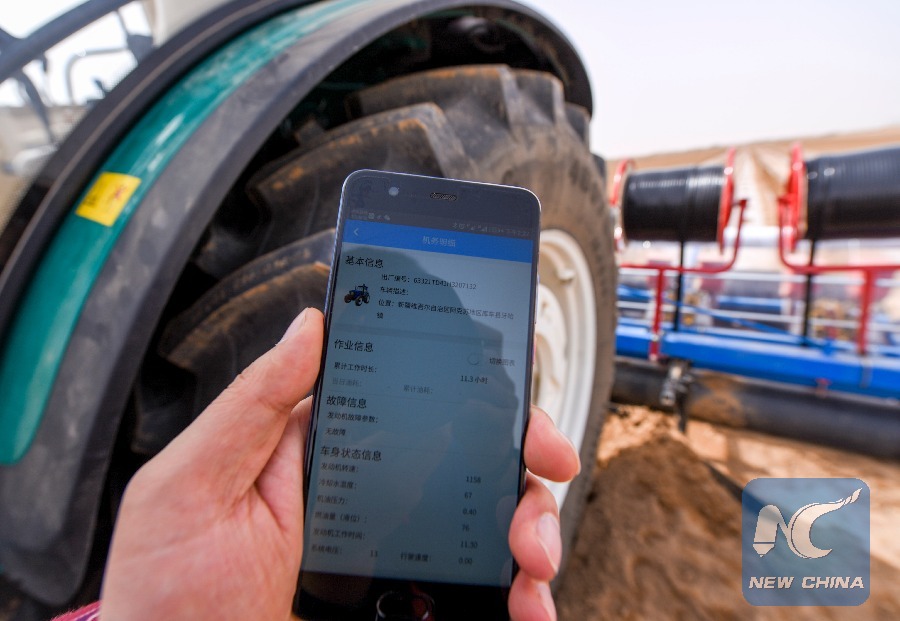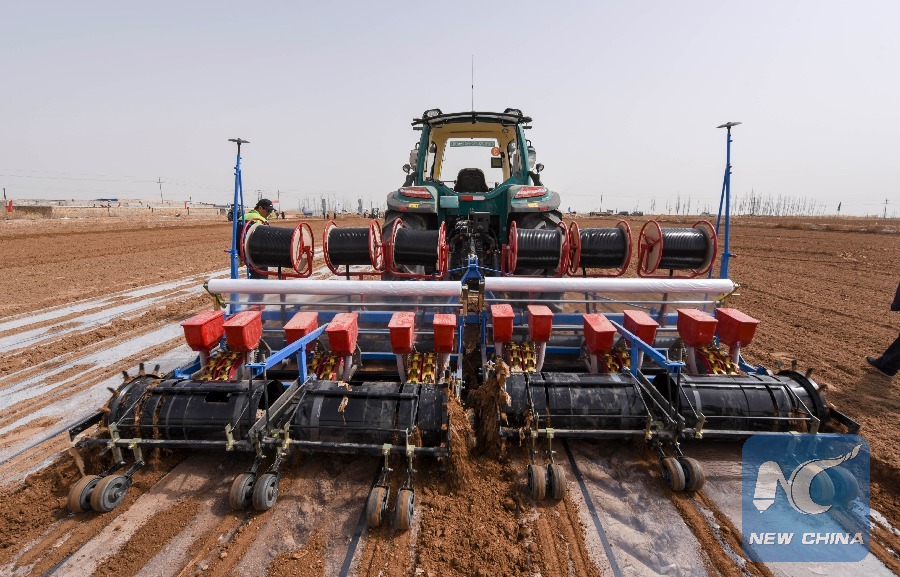
Aerial photo shows a self-driving tractor sowing cotton seeds in the field. (Xinhua/Hu Huhu)
Driverless tractors have made spring ploughing a lot easier this year in Xinjiang Uygur Autonomous Region, China's largest cotton-growing area.
Three driverless tractors were at work on a three-hectare demonstration cotton field in Kuqa County, Aksu Prefecture, ploughing, raking, seeding, fertilizing, and even mulching all by themselves.

Aerial photo shows self-driving tractors in a cotton field. (Xinhua/Hu Huhu)
The automated machines were developed by China's leading agricultural equipment manufacturer, Lovol, and South China Agricultural University (SCAU) as a part of efforts to promote smart farming.
Using automatic navigation systems, the tractors are programmed to move straight at a constant speed and perform various tasks. Farmers can operate them by clicking a start button on a touchscreen in the tractor cabin.
Rather than sitting in the tractor, farmers stroll along the field.

A technician shows a mobile app with information about a self-driving tractor. (Xinhua/Hu Huhu)
"These tractors help us plant better. They seed in straighter rows and more evenly," said Liu Weiwu, a farmer from a local cooperative that grows 933 hectares of cotton fields. He has bought seven such tractors.
Uneven planting leads to inefficient land use and causes difficulties later in cotton topping and harvesting, said Liu.
To achieve full automation, "we must increase the precision of seeding in the very beginning," said Luo Xiwen, professor with SCAU.

A self-driving tractor sows cotton seeds in the field. (Xinhua/Hu Huhu)
In the past, tractor drivers relied on sight to judge the precision of planting work.
"It's hard to do it neatly without any object of reference in the vast cotton fields in Xinjiang," said Luo. He recalled that farmers had to run after tractors and measure the space between cotton rows with rulers.
"It was pure toil," he said.

Aerial photo shows self-driving tractors working in a cotton field. (Xinhua/Hu Huhu)
Xinjiang produced 74.4 percent of China's cotton in 2017, according to the National Bureau of Statistics. With 520,000 hectares of cotton fields, Aksu accounts for one-third of the country's total.
"If we use automated cotton harvesters, we can save 370 yuan (about 59.2 U.S. dollars) per mu (about 666.7 square meters)," said Rokhman Kurban, an agricultural official in the prefecture.
Some farmers started cotton picking manually in October last year and didn't finish until January of this year due to a labor shortage.
"With machines, farmers can finish harvesting in October, when the cotton price is usually the highest," said Rokhman.

A self-driving tractor sows cotton seeds in the field. (Xinhua/Hu Huhu)
To promote automated farming, 100,000 hectares of cotton will be harvested by machines this year.
"Automation has become the key to modern agriculture development. It's high time for China to develop world-leading agricultural technology," said Luo, adding that the driverless tractors are just the beginning.

